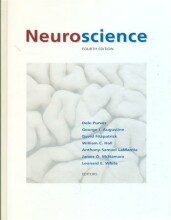Summary: Principles Of Exercise Testing And Interpretation ... | 9781609138998 | Karlman Wasserman
- This + 400k other summaries
- A unique study and practice tool
- Never study anything twice again
- Get the grades you hope for
- 100% sure, 100% understanding
Read the summary and the most important questions on Principles of exercise testing and interpretation : including pathophysiology and clinical applications | 9781609138998 | Karlman Wasserman ... [et al.].
-
1 Exercise Testing and Interpretation
This is a preview. There are 4 more flashcards available for chapter 1
Show more cards here -
1.1 Cell respiration and bioenergetics
This is a preview. There are 6 more flashcards available for chapter 1.1
Show more cards here -
Name the 3 mechanisms for energy supply.
1. Aerobic (O2-requiring) oxidation of substrate (glycogen and fatty acids)2. Anaerobic hydrolysis of PCr (phosphocreatine)3. Anaerobic oxidation of glycogen or glucose (forming lactate) -
Which energy mechanisms is responsible for the O2-deficit and O2 debt during recovery?
The anaerobic hydrolysis of PCr -
In what way does PCr contribute to ATP regeneration?
A reservoir of PCr is present in the muscle.1. PCr splits in Cr and Pi. P can bond with ADP to form ATP again.2. It also acts a a shuttle to translocate Pi from the mitochondria towards the myofibril. -
What happens when the cell becomes O2 poor?
During the glycolysis NAD+ is reduced to NADH + H+. When there is no O2 present to 'catch' the protons (H+), the H+ binds to pyruvate which makes lactate (NADH + H+ --> NAD+ +lactate). -
Does the splitting of PCr increases the cell's acidity or decreases it?
PCr is a relatively strong acid, so when it splits to Cr (which is neutral) the cell becomes less acidic -
How many protons are produced with each lactate ion?
1 H+ -
By with molecule is the H+ (produced by lactate) buffered during anaerobic glycolysis?
By HCO3 - (bicarbonate) -
Why does the PCr reaction consumes CO2?
Because the splitting of PCr makes the cell less acidic, H20 + CO2 --> H2CO3 --> HCO3 - + H+. The H+ in this reaction brings the cell acidity back to basic values (?) -
1.2 why measure gas exchange to evaluate..
This is a preview. There are 1 more flashcards available for chapter 1.2
Show more cards here -
welke reacties kunnen gemeten worden met cardiopulmonary exercise testing(CPET)
reacties in de cellen, in het cardiovasculaire systeen en ventilatoire systeem -
What 3 system can be measured simultaneously with CPET?
1. The cellular system2. Cardiovascular system3. Ventilatory system
- Higher grades + faster learning
- Never study anything twice
- 100% sure, 100% understanding
Topics related to Summary: Principles Of Exercise Testing And Interpretation ...
-
Exercisse testing and interpretation
-
Physiology of Exercise - Skeletal muscle: mechanical properties and fiber types
-
Physiology of Exercise - bioenergetics - Phosphocreatine splitting kinetics
-
Bioenergetics - Substrate utilization and regulation - Carbohydrates
-
Physiology of Exercise - Oxygen cost of work
-
Physiology of Exercise - Lactate increase
-
Physiology of Exercise - Buffering the exercise-induced lactic acidosis
-
Physiology of Exercise - The anaerobic threshold concept
-
Physiology of Exercise - metabolic-cardiovascular-ventilaory coupling - Sources of adenosine triphosphate regeneration reflected in an VCO2 kinetics
-
Physiology of Exercise - metabolic-cardiovascular-ventilaory coupling - Cardiovascular coupling in metabolism: muscle oxygen supply
-
Physiology of Exercise - metabolic-cardiovascular-ventilaory coupling - Ventilatory coupling to metabolism
-
Physiology of Exercise - metabolic-cardiovascular-ventilaory coupling - Effect of dietary substrate

































